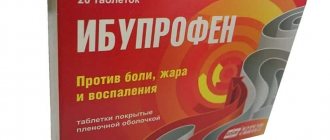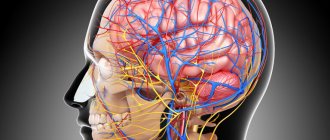This type of ARVI differs from others in the most painful and long-lasting symptoms. For most people who get sick, the flu causes debilitating headaches. They appear in almost 90% of cases. The duration of illness depends on several reasons, including viral load, lifestyle, and the presence of chronic disorders.
Causes of headaches due to viral diseases, colds and flu
Headaches due to influenza and other viral diseases can occur for several reasons:
- intoxication, that is, poisoning of the body with toxins - waste products of viruses and bacteria;
- increased production of cerebrospinal fluid, which because of this puts pressure on the membranes of the brain;
- complications of colds: sinusitis - inflammation of the paranasal sinuses - or otitis - inflammation of the ear.
Why does my head hurt and feel nauseous?
Among the causes of nausea and headaches are infectious and non-communicable diseases, pathologies of the nervous and cardiovascular systems. The disease manifests itself due to intoxication and insufficient blood supply to the brain. Typically these symptoms indicate severe fatigue and impairment. This type of headache can also occur during pregnancy.
Causes:
- Overwork and lack of sleep. The body does not have time to recover and rest due to lack of sleep, which leads to negative health.
- Viral diseases that affect body systems and organs. Additional symptoms in such cases will be fever, muscle and joint aches.
- Viral diseases can cause headaches and nausea. For example, flu or sore throat, as well as seasonal infection, can trigger the disease. In this case, experts recommend bed rest and drinking plenty of fluids.
- Lyme disease is an infectious disease caused by a tick bite.
- Pregnancy.
Headache as a symptom of a cold
Headaches due to colds are usually localized in the area of the eyeballs and forehead. It can be either unilateral or bilateral. The pain is moderate, but if complications develop, it can intensify, causing significant physical discomfort. If, during cephalalgia, mucous discharge from the nose becomes more abundant, this may indicate the spread of a viral infection to the nasopharynx. Headache, cough, runny nose, which do not improve with antiviral treatment, often indicate the occurrence of sinusitis. A dry or wet cough, sore throat and fever may also occur. These additional signs indicate a complex course of the cold and complications of respiratory viral diseases with laryngitis, sore throat or bronchitis - depending on the intensity of additional manifestations of the disease. A throbbing headache may indicate the development of a dangerous complication - meningitis, especially if the attacks are accompanied by vomiting. A headache with a cold without fever may indicate a weakening of the body’s defenses or a high risk of latent infectious diseases.
Interaction of NSAIDs with other drugs
The selection of the most effective drug should be carried out individually based on existing symptoms and contraindications . It is also important to consider what other medications the patient is taking and their compatibility7.
Naproxen in combination with other drugs may8,12:
- enhance the effect of indirect anticoagulants, increasing bleeding time;
- potentiate the effect of drugs that bind to plasma proteins, for example, hydantoin derivatives;
- reduce the antihypertensive effect of beta-blockers, for example, propranolol, and also increase the risk of developing renal failure while taking ACE inhibitors and cyclosporine;
- increase plasma lithium levels by inhibiting renal clearance;
- cause nephrotic syndrome when taken simultaneously with amoxicillin;
- when combined with lithium carbonate - increase its concentration in the blood, with methotrexate, phenytoin, sulfonamides - increase their toxicity, and with morphine - lead to the development of myoclonus (impaired muscle activity);
- when used simultaneously with prednisolone, it increases its concentration in the blood, and with salicylamide, it enhances its effect;
- in combination with furosemide, reduce its diuretic effect8,12.
Taking two or more NSAIDs at the same time may reduce their effectiveness and increase the risk of adverse reactions7.
Also, many medications taken with NSAIDs can affect their effectiveness7:
- antacids containing aluminum (almagel) and cholestyramine reduce the absorption of non-steroidal drugs in the gastrointestinal tract;
- sodium bicarbonate increases the absorption of NSAIDs in the gastrointestinal tract;
- glucocorticoids enhance the effect of NSAIDs;
- narcotic analgesics and sedatives (sedatives) increase the analgesic effect of non-steroidal drugs7.
Thus, the use of NSAIDs has many nuances. Only a doctor can take everything into account and choose the optimal drug. Self-diagnosis and self-medication, even for common colds, are unacceptable.
_______________________
*The frequency of taking Motrin® is 2 times a day (see instructions).
Up to contents
The information in this article is for reference only and does not replace professional advice from a doctor. To make a diagnosis and prescribe treatment, consult a qualified specialist.
Headache when coughing
A short-term headache when coughing occurs due to increased intracranial pressure during coughing. A typical attack does not last long – 20–30 seconds. It disappears when the cough ends. Similar painful attacks occur with cervical neuralgia and osteochondrosis. During coughing, turning the neck and tilting the head, the nerve endings are pinched, which leads to unpleasant sensations. Pain with cervical osteochondrosis always intensifies during coughing, since the act of coughing is accompanied by slight compression of the nerve structures located next to the cartilaginous tissues of the spine. In this case, the source of pain is often localized in the back of the head, accompanied by dizziness, a feeling of fullness and tinnitus. Osteochondrosis of the cervical spine occurs with impaired blood circulation in the brain and can cause dangerous complications. Therefore, do not delay visiting a specialist, especially if pain attacks occur regularly.
Why does my head hurt in the forehead area?
This phenomenon is quite common in all age groups of the population. Such pain can be acute or chronic, occur independently or in combination with other symptoms. Pain in the frontal lobe occurs even in a healthy person, so their one-time occurrence should not be a cause for concern.
If a person constantly has a headache in the frontal lobes, then there are a number of reasons for this:
- Tension headaches can occur even in healthy people. We must remember that rest is an integral part of the life process. This pain may go away after taking analgesics.
- Eye pain may also spread to the forehead area. The pain begins behind the eyes and spreads to the frontal lobe. Its manifestations are similar to tension headaches: they occur against the background of overwork or active mental work, last from several hours to several days, and are easily relieved with over-the-counter analgesics.
- Sinusitis causes sharp pain in the frontal part of the head and nose. Accompanied by impaired nasal breathing, lacrimation and decreased sense of smell.
- Arteritis is considered the rarest cause of headaches. The disease is associated with inflammation of the walls of large arteries. They become dense and visible above the surface of the skin. The main symptom of the disease is acute pain in the forehead.
How to get rid of headaches
In order for headaches, runny nose, cough, and symptoms of respiratory viral diseases to subside as soon as possible, you need to take care of yourself by following a gentle regimen throughout the entire treatment period. Do not prescribe medications for yourself without first consulting a doctor - only a doctor knows how to relieve headaches during a cold and what medications should be prescribed in a particular case.
Non-drug treatment
- Minimize physical activity, ideally staying in bed and getting plenty of sleep.
- Refrain from books, TV, computer, smartphone - and in general from mental stress of any kind.
- Make sure the room has enough fresh air and is not too dry, hot or cold.
- Drink plenty of fluids. Water and other non-alcoholic drinks - berry fruit drinks, herbal teas, rosehip decoction - help remove toxins from the body, thereby eliminating one of the main causes of the development of symptoms of headache, cough and runny nose.
Drug treatment
Antipyretic drugs prescribed for the flu, as a rule, can relieve headaches, runny nose and weakness, but they should only be used when the body temperature is really high (from 38 ° C for children and from 38.5 ° C for adults). You should also use analgesics with caution: swallowing one painkiller tablet after another is unacceptable. In many cases, when treating headaches due to colds, you can give preference to herbal remedies. Dr. MOM® Phyto ointment, intended for both adults and children over 3 years of age, can bring noticeable relief to the patient. This is a local remedy used for headaches, colds, and viral infections. It contains four essential oils and helps relieve headaches from colds without fever or with signs of fever. When applied, the drug has a local irritating, distracting, anti-inflammatory and antiseptic effect. To get rid of headaches due to colds, Doctor MOM® Phyto ointment should be applied to the temples. When you are also worried about a runny nose, the ointment will also help ease your breathing if you apply it to the wings of your nose.
Bibliography
- The role of combination drugs in etiopathogenetic pharmacotherapy of acute respiratory viral infections. Mubarashkina O. A. Medical Council. 2014. No. 11. pp. 14-17.
- Infectious diseases. Budanov B.V., Marushkin I.I., Filimonov V.V. E-Scio Journal. 2021.
- Modern view on the problem of symptomatic treatment of acute respiratory viral infections. Lazareva N. B. Medical Council. 2014. No. 1. pp. 35-38.
- Modern approaches to the prevention and treatment of acute respiratory viral infections. Mubarashkina O. A. Remedium. Magazine about the Russian drug market and medical equipment. September 2014. pp. 42-22.
- Possibilities of pathogenetic therapy of influenza. Tsvetkov V.V. Medical Council. 2014. No. 17. pp. 14-17.
- Comparative study of the antipyretic effect of non-steroidal anti-inflammatory drugs when administered intragastrically and rectally. Orlova T.V., Pankrusheva T.A., Pokrovsky M.V. et al. Kuban Scientific Medical Bulletin. 2012. No. 2 (131). pp. 134-137.
- The use of non-steroidal anti-inflammatory drugs in therapeutic practice. Lysenko N.V., Soldatenko I.V., Kartvelishvili A.Yu. Bulletin of V.N. Kharkov National University Karazin. Series "Medicine". 2010. No. 918. pp. 114-125.
- Instructions for use of the drug Motrin®.
- Naproxen: a versatile analgesic with minimal risk of cardiovascular complications. Karateev A.E. Modern rheumatology. 2021. No. 10(2). pp. 70–77.
- Pharmacology, under. ed. Yu. F. Krylova and V.M. Bobyreva. - Moscow, 1999.
- Clinical effectiveness of non-steroidal anti-inflammatory drugs in some ENT diseases in children. Sergeev M.M., Kovalenko S.L. Issues of modern pediatrics. 2009. pp. 81-84.
- Instructions for use of the drug Naproxen.
When urgent medical attention is required
A severe headache with a cold can be a symptom not only of ARVI or uncomplicated influenza, but also of more dangerous diseases, such as meningitis. If the discomfort does not go away for a long time, increases with tilting the head and sudden movements, or is accompanied by nausea and vomiting, you should immediately consult a doctor.
There are other types of pain that may indicate the development of serious diseases. You should not delay visiting a specialist, especially in the following cases:
- a painful attack due to a cold or viral disease becomes intense and unbearable;
- painful sensations are combined with a pre-fainting or fainting state, muscle weakness;
- body temperature rises above 38 ° C, muscle spasms occur, which are localized mainly in the neck, photophobia develops - these symptoms may indicate the development of meningitis.
What if your head hurts in your temples?
Temporal headache is the most common type of headache.
Experts attribute the following to the primary reasons:
- neuralgia
- cluster pain
- overvoltage
- migraine
Secondary causes include:
- cerebral vascular damage
- taking medications
- head or neck injury
- non-vascular intracranial lesions
- HIV infection and AIDS
- hemostasis disorder
- pathology of the skull
- psychological illnesses
What to do if you have a headache in your temples? – If this happens for the first time, then you need to take an analgesic. If the pain persists after taking painkillers, you should consult a specialist. If you experience intense and frequently recurring pain in your temples, it is better to consult a therapist or neurologist. If the pain is a consequence of an injury, then you should make an appointment with a surgeon or traumatologist.
Causes of head colds
Hypothermia of the head, also known as a cold, can be due to a number of reasons:
- air conditioning running at full power in hot weather;
- swimming in ice water;
- long stays outside, especially in windy weather, without a hat in winter;
- open windows in the car while driving;
- staying outside in cold weather with wet hair;
- drafts from windows;
- drinking large quantities of cold drinks and ice cream.
Such risk factors are especially dangerous for people with reduced immunity and various serious chronic diseases.
How will we celebrate the SARS season? Doctors urged not to scare people with “scary” numbers Read more
Complications
It is worth understanding that a cold in the head is fraught with its consequences. “If a person catches meningococcus, he has a risk of getting meningitis. By the way, meningitis as a complication of a head cold can also develop from other conditions. For example, hypothermia of this part of the body leads to complications such as otitis media, inflammation of the nose, runny nose, inflammatory processes in the sinuses, and therefore the development of sinusitis. It may also carry risks of meningitis. This condition is dangerous when you have a cold, and because a secondary infection can occur,” says immunologist Anna Shulyaeva.
Also on the list of complications, doctors name conjunctivitis. Moreover, this pathology is among the most common. If it turns bacterial, then there is purulence from the eyes. The problem can also develop into inflammation of the facial and trigeminal nerves. Against this background, sensory and motor functions are blocked. Temporal arthritis, which develops against the background of irritation of the nerve roots, is also found in the list of complications from head colds. Your temple will hurt on the side where it actually blew. Lymph nodes may also be affected.
There are different types of flu
With a mild form of influenza, the body temperature does not exceed 38C and returns to normal after 2-3 days. Symptoms of general intoxication and catarrhal syndrome are mild, which is practically no different from acute respiratory infections of other etiologies.
The moderate form of influenza is characterized by an increase in body temperature to 39C, severe intoxication and damage to the respiratory system. The fever lasts up to 4-5 days. This form of influenza is the most frequently reported.
Severe forms of the disease are observed mainly during influenza epidemic periods, caused by a new or modified version of the influenza A virus.










